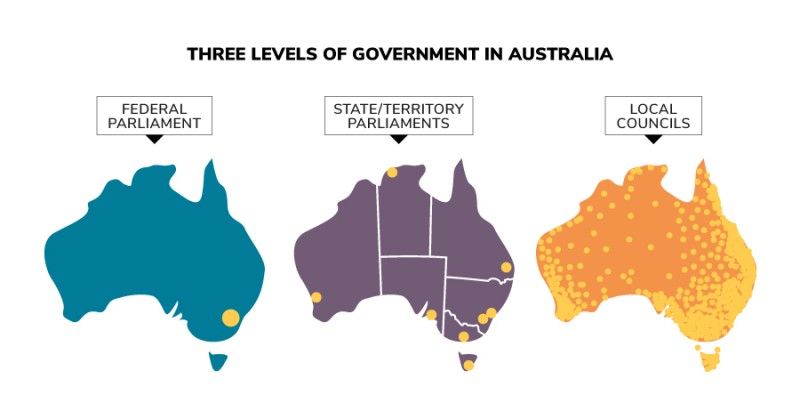How does the constitution divide powers of the Government and how were the State responsibilities derived?
Before Federation, the states were British colonies. Each had been given the power to make laws for that colony by the British Parliament. When Australia became a nation on 1 January 1901, the colonies now states transferred some of their law-making powers to the new Australian Parliament.
Section 51 of the Australian Constitution lists the areas in which the Australian Parliament can make laws. These national issues include foreign affairs, defence and Medicare.
Areas not listed in section 51 are the responsibility of state governments. These state issues include hospitals, police and roads.
Sometimes both the Australian Parliament and the states have the power to make laws about the same issue. Section 109 of the Constitution states that a federal law may override a state law if there is a conflict between the two. Using section 122 of the Constitution, the Australian Parliament may override a territory law at any time.
Three levels of government in Australia

Parliamentary Education Office (peo.gov.au)
Description
The three levels of government – the law-making bodies in Australia. The Federal Parliament is located in Canberra, the nation's capital. State/territory parliaments are located in the capital cities of each of the 6 states and 2 territories. Local councils are located around Australia in each local council division.
This work is licensed under a Creative Commons Attribution-NonCommercial-NoDerivs 3.0 Unported License.
You are free to share – to copy, distribute and transmit the work.
Attribution – you must attribute the work in the manner specified by the author or licensor (but not in any way that suggests that they endorse you or your use of the work).
Non-commercial – you may not use this work for commercial purposes.
No derivative works – you may not alter, transform, or build upon this work.
Waiver – any of the above conditions can be waived if you get permission from the copyright holder.
